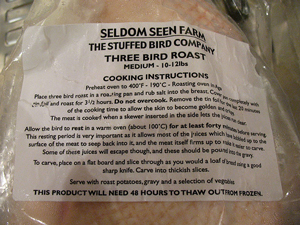
Source: The Big Picture, the1second film, Flickr
OK, so why should you care about subordinating conjunctions? The short answer is because they help you communicate with other people. A subordinating conjunction, however, is only one member of the “joiner” family of words that connects or joins clauses. By joining clauses, subordinating conjunctions help introduce, prioritize, contrast, sequence, and connect ideas within a sentence, and they also make your writing more interesting to your readers.
Some of the members of the “joiner” family are as follows:
- Coordinating conjunctions (i.e., the FANBOYS, a mnemonic for the coordinating conjunctions For, And, Nor, But, Or, Yet, So)
These conjunctions are mainly used to connect or coordinate words, phrases, and clauses.Example: Two of my friends are trumpet players, but one plays flute.
- Subordinating conjunctions (including their cousins, the conjunctive adverbs)
Often found in complex sentences, these “joiners” connect a dependent clause and an independent clause and establish a relationship between them.Example: The punk rocker crossed the road because he was tied to the chicken.
- Conjunctive adverbs (e.g., furthermore, however, and likewise)
These words add subtle, or not obvious, meaning to sentences and connect two independent clauses.Example: It was a rough game; nevertheless, we prevailed.
As you can see, there are several ways to join groups of words, but the function of subordinating conjunctions is what sets them apart from the other members of the “joiner” family. Unlike coordinating conjunctions, subordinating conjunctions actually change one of the two clauses they join so that one clause becomes subordinate to the other. In other words, these conjunctions make one part of the sentence dependent on the other part of the sentence. These two sentence parts are called the dependent clause and the independent clause.
If you’re not careful, you can get into trouble when you start a sentence with a subordinating conjunction and place a period after the first part of the sentence because you will create a sentence fragment. If this is beginning to get a little fuzzy, don’t worry. The scenario that follows might help clear it up.

Source: School tour, amlusch, Flickr
Imagine you’re in the hall, standing at your locker between periods. Your friend comes up to you and makes this statement:
Because they were stapled to the chicken.
Would you have any idea what “stapled to the chicken” meant? It could mean any number of things, all of which seem strange and weird. In fact, stapling a chicken sounds cruel. You may even step away from your friend.
What if you came across this same set of words in a text? Can you see how the same confusion would result if you wrote an incomplete thought such as this one in a writing assignment? The confusion results from incorrectly using the subordinating conjunction because. It is a perfectly fine word, of course, but when you put a subordinating conjunction at the beginning of a group of words, it turns the group of words into an incomplete thought. In other words, the presence of a subordinating conjunction—a word such as because, therefore, before, and nevertheless—makes the group of words dependent, or subordinate, on other information to complete the thought. The words “because it was stapled to the chicken” make no sense unless you add more information before or after them.

Source: Three Bird Roast - Cooking Instructions, Alice Harold, Flickr
Now, imagine your friend makes the following statement instead:
My sister baked and ate the cooking directions because they were stapled to the chicken.
The dependent clause makes sense when another clause is added to it. We know the added clause is an independent clause because if we insert a period after “directions,” the thought makes sense, even if the sister’s actions seem more than a little odd.
In a moment, you will see another example of how a subordinating conjunction might be used. This time we won’t use it to form a dependent clause. Instead, we’ll join two independent clauses with a subordinating conjunction to make the writing less choppy and more compelling. Once the two independent clauses are combined, the finished sentence will have one independent clause and one dependent clause—just like the example above. Now, read these two independent clauses and notice what happens when they are combined.
She had practiced with her Hula-Hoop for years. She did not win the state championship.
Revision: Although she had practiced with her Hula-Hoop for years, she did not win the state championship.

Source: Five Hula-Hoops, quinn.anya, Flickr
Notice there is a cause-and-effect dimension in the newly combined sentence that adds interest. Whenever you add a subordinating conjunction such as in order that, since, as, or so, you signal to the reader that two conditions, one dependent on the other, are working together. You suggest an active or dynamic relationship. This relationship tends to make readers pay more attention so that they can form a better understanding of the message.
Remember, once you put a subordinating conjunction at the beginning of a group of words—thereby making it a subordinate clause—the subordinating conjunction creates a dependent clause that cannot stand alone unless you want to risk writing a sentence fragment.
The chart below contains a list of some common subordinating conjunctions.
| after | if | though | although | if only |
| as if | as | in order that | unless | once |
| now that | until | as long as | whenever | when |
| as though | rather than | before | because | since |
| where | than | so that | whereas | even if |
| while | wherever | even though | that |

The clauses below are a mixture of independent and dependent clauses. Select “independent clause” or “dependent clause” from the drop-down list beside each one, depending on whether or not the clause is a complete thought.